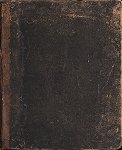Sambucus Nigra.
Sambucus nigra (Linn.). Elder. N. O. Caprifoliaceae. Tincture of fresh leaves and flowers.
Clinical.-Angina pectoris. Asthma. Chest, oppression of. Coryza, dry. Cough. Croup. Emaciation. Headaches, catarrhal. Hoarseness. Hydrocele. Ileus. Laryngismus. Perspirations. Phthisis. Scurf. "Snuffles." Starting. Whooping-cough.
Characteristics.-The leaves of Samb. n. have an unpleasant odour when bruised, which is supposed to be offensive to most insects, and a decoction of them is sometimes used by gardeners to keep off caterpillars from delicate plants. By village herbalists the inner bark as well as the leaves are employed for making an ointment, and the flowers serve for fomentations, or are made into a medicinal tea; while the berries are the principal ingredient in Elderberry wine (Treas. of Bot.). If sheep that have the rot can get at the bark and young leaves they will soon cure themselves (Green). Millspaugh says of Samb. canad. that a decoction or ointment of the flowers and leaves was used as an application to large wounds "to prevent deleterious consequences from flies." He also says that the bark contains Viburnic acid, which is identical with Valerianic acid. This no doubt accounts for the odour, and suggests a relationship in action between Sambucus, Valerian, and the Viburnums. "Spasm" will be found common to all. In Samb. the spasm affects mainly the respiratory system-larynx, chest, and nasal passages. Samb. n. was proved by Hahnemann, and appears in M. M. P. One of the chief notes of the remedy is oedema: dropsical swellings in various parts of the body, especially legs, instep, and feet. This oedema, when it affects the nose, may give rise to obstruction, as in the "snuffles" of infants with dry coryza, preventing breathing and nursing. When it occurs lower down in the tract it causes dyspnoea: the child awakens suddenly nearly suffocated, face livid, blue, sits up in bed; turns blue, gasps for breath, which it finally gets; attack passes off but is again repeated; child inspires but cannot expire; sleeps into the attack. The breathing is rattling. Croup, whooping-cough, asthma, may all manifest this group of symptoms. Nash once relieved with the 200th a very bad case of asthma, having attacks of suffocation of the above kind. The patient was an old lady. The relief was accompanied by a profuse flow of urine, which carried off a large amount of dropsical effusion in her legs and abdomen.-It was mentioned above that the croupy attack "passes off but is again repeated." This tendency of attacks to recur is another note of the remedy. Another grand characteristic is: Profuse sweat during waking hours; dry heat when asleep. This feature marks Samb. as the remedy in some phthisical cases and many febrile conditions. Other fever peculiarities are: Deep, dry cough precedes the fever paroxysm; fever without thirst; dreads uncovering. The Sensations of Samb. are: As if head were filled with water. Skull as if stretched. As if suffocating. The symptoms are > by pressure and being tightly bound. Leaning against a hard edge = painful pressure in abdomen with nausea. Contusions = dark red swelling. Rest
 Materia Medica Bücher kostenlos
Materia Medica Bücher kostenlos
